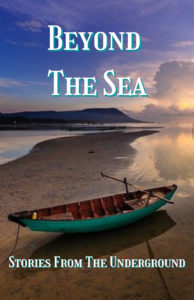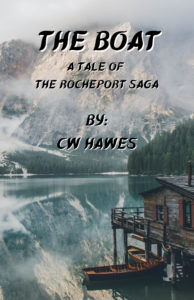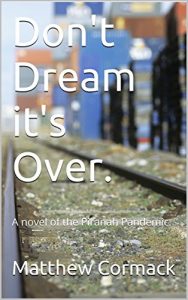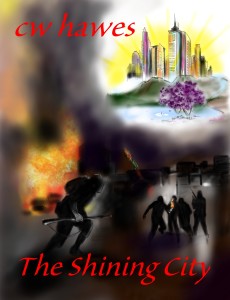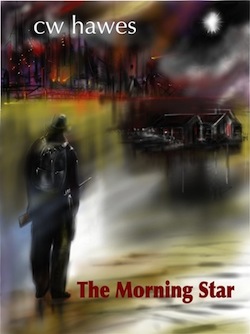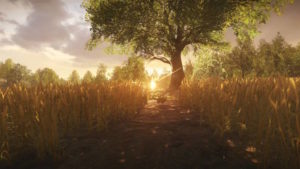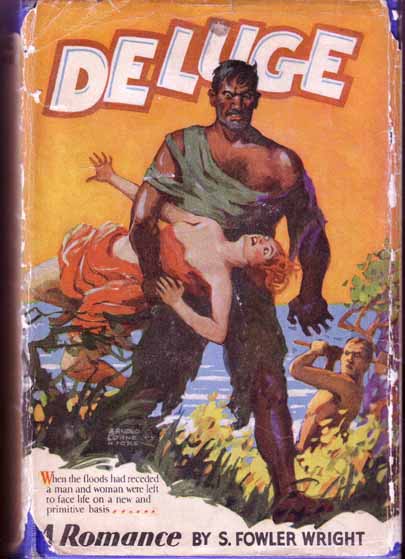Today begins a new year. So I thought I’d recap some of the excellent books and stories I read in 2018.
I’m loathe to rank the books I read, and I definitely don’t like to single one out as the Best of the Year. Mostly because tastes change and what I put on top today, I might put in the middle tomorrow.
That being written, 2018 was a banner year because I discovered many wonderful writers and even more truly fabulous books and stories.
What I thought I’d do is look over the 43 novels and novellas, the 5 short story collections and 37 individual short stories, and the 8 books of non-fiction I read and give some a shoutout. Good reads with which to load up your ereader for 2019.
Quite a few of the books I read in 2018 I’ve already promoted on Twitter, featured as my Book of the Week on Facebook, or written reviews for this blog. The rest are waiting for their turn in the limelight.
As a reader, I don’t usually finish a book that isn’t holding my attention. I’m 66 and there are too many good books out there to waste time on the bad ones. After all the actuarial tables aren’t on my side.
I also don’t bother with books touted as bestsellers or award winners. Mostly because the disappointment factor is very high with those books. I’ve discovered true gems amongst the books that are not bestsellers and amongst those that have garnered no awards.
Success is largely a matter of luck, and generally has nothing to do with talent. In writing, as in life, persistence is the key.
Now on to the books!
Secrets of the World’s Best-Selling Writer by Francis L and Roberta B Fugate. This is the best book on writing I’ve ever read. And I’ve read quite a few. The book is about the writing career of Erle Stanley Gardner, the creator of Perry Mason. The Fugates had access to the vast archive of Gardner’s notebooks, letters, and papers. The writing advice comes straight from Gardner himself — and the book is full of wisdom. Every writer who is serious about selling his or her work should have this book. And readers interested in the creative process, should also have this book. It’s a treasure trove.
I love short stories and short novels. Too often long works are filled with unnecessary padding — stuff that doesn’t contribute much, if anything, to the story.
However, I did read a couple of hefty tomes in 2018. And neither one had any flab. They were:
Church Mouse by RH Hale
Don’t Dream It’s Over by Matthew Cormack
I’ve previously extolled (and will continue to do so) the virtues of Church Mouse. It’s a powerful novel with exceedingly well-drawn characters. A very memorable read. A modern day classic.
Note: Due to Amazon’s anti-small author policies, Church Mouse is not available in the Amazon US store. The links take you to Ms Hale’s website and from there you can purchase the book at the vendor of your choice.
Don’t Dream It’s Over is one of the best post-apocalyptic novels I’ve ever read. Matthew Cormack, with a deft hand, paints us a world that is not nice — but wherein lies much hope. Hope for a better future than what we might have gotten in the old world.
The book is also one of the most in depth character studies I’ve ever read. You have to read Kazuo Ishiguro to find something similar. An excellent, excellent read.
Now on to the shorter stuff!
In 2018 I made the acquaintance of quite a number of new (to me) writers. Some of these were:
Richard Schwindt
Joe Congel
Seabury Quinn
Stephen A Howells
Ernestine Marsh
Ray Zacek
Simon Osborne
Andy Graham
Zara Altair
Mark Carnelley
John Paul Catton
These men and women will provide you with many hours of great reading pleasure. So let’s look a bit further and see what kind of pleasure they will bring.
Richard Schwindt has 10 works of fiction (by my count) and I’ve read 8 of those works. He’s an entertaining writer, who delivers good mysteries and occult detective tales, along with imaginative fantasy and paranormal reads. His books are infused with humor, and always give me food for thought.
To start, check out Herkimer’s Nose and Fifty-Seven Years (written under his Will Swift byline). Great reads by a great author!
Joe Congel writes traditional private detective mysteries. His books and stories give a nod to the Golden Era of the mystery, while at the same time being very modern reads. If you like the old school mystery, you’ll like Joe Congel’s Tony Razzolito!
The late Seabury Quinn was a very prolific writer during the pulp magazine era. His first published story was in 1918 and his last (I believe) was in the early 1950s. He wrote across many genres, but is best known for his stories in Weird Tales magazine. He was that magazine’s most popular author, and I can see why. The occult detective Jules de Grandin is his most well-known character.
Stephen A Howells has one book published to date, and in my opinion it is a big time winner. The Garden of Jane Pengelly is part ghost story, part love story, part fantasy, and part magical realism. And it is all wonderful! Mr Howells can tug at your heart strings, so have the tissue box handy. You will love this book.
Ernestine Marsh is the queen of the bitingly satirical comedy novel. Agonising is a look at our foibles and how ridiculous we as a species are at times. Ms Marsh wades in with no holds barred and pulls no punches. I laughed with every page I read. I can’t wait to read the sequel, In Agony Again. Voltaire move over.
The work of Ray Zacek can be darkly humorous, or satirical, or just plain dark. I like his stories very much. My favorite to date is Daguerreotype. The tale is a haunting exploration of our dark side and the risk of indulging it. Treat yourself to Mr Zacek’s work. You won’t regret it.
Simon Osborne’s post-apocalyptic novel, Off Grid, begins with an alien invasion — and the aliens don’t want us around. The rest of the book is a story of survival, planning for the future, and deciding how to get rid of the aliens so we have a future. Off Grid is well-written and just plain good.
In the two works by Andy Graham that I’ve read, he gives us wonderfully dark tales. Stories that explore the unseemly part of our psyche and of our soul. An Angel Fallen is especially powerful and memorable. Do check out his work. You won’t be sorry.
Zara Altair writes mysteries set in Ostrogoth Italy a couple decades after the fall of the western Roman Empire. Argolicus is a retired Roman bureaucrat who gets involved in solving murders — in a culture where murder is not a crime! Give the Argolicus mysteries a try. Start with The Peach Widow.
Mark Carnelley has written an intriguing post-apocalyptic book, The Omega Chronicles, where only one person survives the disaster. What would you do if the survivor was you? Definitely worth your time.
John Paul Catton’s work is remarkable for its inventiveness. Tales from Beyond Tomorrow, Vol 1 is a short story collection that explores a variety of themes. A writer decidedly outside the norm. Take a read!
Now on to a few authors who are no stranger to this blog.
If you have a penchant for stories that have the qualities of a fairy tale, then Sarah Zama’s The Frozen Maze is for you. Quite good!
Jack Tyler’s work makes a strong contribution to the good old-fashioned adventure yarn. However, the book that has impressed me the most is his epic fantasy novel, The Stone Seekers. Mostly because it isn’t a Tolkien ripoff. It’s fresh and creative. The book breathes new life into a sub-genre that is filled with hack writing. Do check out The Stone Seekers.
Mannegishi by Ben Willoughby is an inventively dark take on a Native American legend. If you like horror, you’ll like Mannegishi. And all of Willoughby’s other horror tales.
It is no secret that I am very fond of the work of Crispian Thurlborn. And his latest story, Exit, does not disappoint. Thurlborn’s work is imaginative and at times difficult to categorize. It’s often darkly humorous, and written in a style that would make Dickens envious.
Exit is a story that would have made a stunning episode on The Twilight Zone. It’s a good example of dreampunk (you know, Alice in Wonderland) — and it is simply fabulous. Can we actually change our lives? Or are we doomed to live them forever on repeat? Read Exit and then try to answer those questions.
So that’s my reading recap for 2018. Now on to 2019. I’m currently reading Frank Belknap Long’s early Cthulhu Mythos novel The Horror from the Hills. And I’m looking for some good writers to explore this year. If you have suggestions, let me know.
Comments are always welcome! And until next time, happy reading!
Share This!

